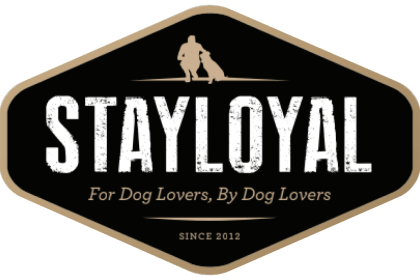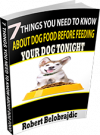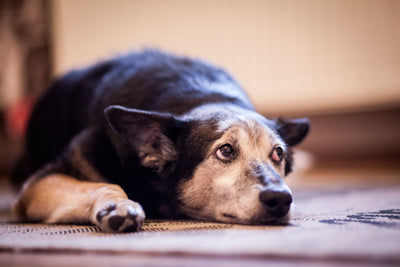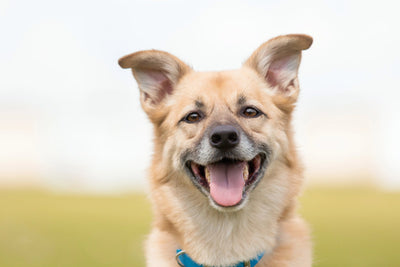How to Stop a Dog from Picking Things Up on a Walk

There is nothing as enjoyable as taking a walk with our dog, usually. However, a walk can quickly become a tedious task if your four-legged best friend is constantly trying to pick up, and even eat, anything he comes across. In some cases, like picking up a stick, this may be harmless. However, many owners end up at the vet’s office from things dogs have picked up and swallowed on walks including rocks, glass, dead animals (bacterial poisoning is a common occurrence here), and unfortunately, laced “treats” that are purposely put out for dogs to find. People have found poisoned hot dogs and pieces of meat with metal inside them, all left to harm your dog. And then of course there are poisonous snakes and other things your dog just shouldn’t mess with. Because of all this, it’s best to teach your dog to not pick up things on a walk. This may sound tricky, but with just a bit of patience, it’s not too hard and could save your dog’s life.
How to Stop Your Dog from Picking Things Up on a Walk
If your dog is a puppy, this is going to be a lot easier than a dog that has been practicing the habit of picking up whatever he wants for several years. That doesn’t mean you can’t teach him; it just might take you a bit longer. Be patient and consistent and you can train any dog to leave things alone.
Teach Your Dog to ‘Leave It’
To get your dog to stop picking things up, you need a rock-solid Leave It. A good Leave It cue teaches your dog to stop going towards the object he wants and to re-focus on you instead. The last part is very important. If you don’t teach your dog to do something else, he may leave the item for a second, but then go right back to it.
1 - Start in your home with something that is pretty easy for your dog to leave, like a piece of food your dog does not particularly care for, a small toy, etc., in your closed hand. (whatever is should fit completely in your closed hand so it’s not sticking out) Your dog is going probably sniff, lick and even paw at your hand. As soon as his nose (and/or paw), stop touching your hand, you are going to praise/reward (this works best if you use a clicker to “mark” the moment your dog leaves your hand alone). After rewarding, remove your hand from your dog’s eye sight for a second or two to “reset” and put it back in front of him. Keeping your hand closed.
NOTE: If you are using food, do not use the food you are asking him to leave as the reward, give him something else. Otherwise, he may think – oh, I can have this as soon as my owner has praised me for leaving it.
2 - Eventually, your dog will stop even going toward your hand. At that point, delay your praise/reward. Almost all dogs will look at you like, “hey, I get a treat for not touching your hand, where is it??” That’s when you praise/reward. So now, you have taught your dog, “Don’t go toward that, and look at me instead,” (that’s the refocusing on you that’s so important to an effective Leave It).
NOTE: If your dog does not look at you after a second or two, you can make a kissing noise or some other slight noise to get him to look at you. Then praise and reward. Fade that noise quickly, however, by using it just a couple times before trying again for your dog to look at you, otherwise it will become a cue.
3 – Once your dog is turning and looking at you each time without going toward your hand, it’s time to add the cue. Say Leave It (or whatever cue you want to use), AS YOUR DOG’S HEAD IS TURNING TO LOOK AT YOU. Praise and reward.
4 – After adding the cue several times, test it by saying the cue right as you produce your hand. If your dog immediately looks at you, he’s got it! It’s time to up the game. If not, go back to step 3 a few more times and try again.
Adding Difficulty
Like with all training, you need to build up slowly. Next, open your hand with the item in sight. DO NOT SAY THE CUE! Most dogs will dive right for it and you will ruin your cue. If he does, close your hand so he cannot have it. Wait for him to leave your hand alone, reopen it, and try again. Repeat steps 1-4 with an open hand (they will go much quicker this time, as your dog already knows the “game”).
Once you have done this, it’s time to try something harder. Put the item on the ground, keep your hand close to the ground so you can block your dog (or if you wish you can use a piece of cardboard or food dish even to put over the food.)
If at any time your dog ignores your cue, do not repeat it. Instead, it’s a sign you made it too difficult too quickly and you need to go back a step or two and stop using the cue until he has it. Soon, you will be able to say Leave It to anything (even a piece of steak on the floor!) and your dog will look at you instead of the item.
Time to Walk!
When it’s time to walk, be prepared with plenty of rewards for your dog (it can be a favourite toy, pets or a food reward), so reward him for leaving things alone. You may decide a short walk is best at first.
If at any time you see your dog diving for something after you have cued, immediately turn in the opposite direction and walk away so he cannot have it, or use your body to block. Do not punish if they get it. In this case, punishment to your dog just means that you wanted that same resource and he did not get it quickly or sneakily enough, and next time your dog will dive quicker and even take off after grabbing it, to make sure you don’t get it.
As his Leave It gets better, you will not have to reward every time. In fact, it makes a behaviour stronger if your dog is rewarded sometimes with food or a pet or a toy, and sometimes not. Verbal praise is easy and something you can do every time if you wish.
The nice thing about a heavily reinforced Leave It is that it can become “auto” for some dogs over time. This means that they will start to turn and look at you when they see something on the floor, without you even having to use your cue. This happens after LOTS of positive reinforcement (reward) and repetition.
I have a friend with a sheltie that can drop a piece of steak (or anything!) on the floor and he looks at her as if to say, “Can I have that, or no??” If the answer is yes, she gives him his release word (ends a behaviour), and points to it so he knows he can have it. If the answer is no, she tells him he is a good boy and may give him something else, like a toy, as a reward. You can do this on walks as well once your dog is a pro, so maybe that stick he wants to carry around is okay, but that discarded garbage is not.
The most important thing is to remember to work on this at home first, with things that are easy for your dog to leave, and then work up to the hard stuff on the walk. If you live somewhere you have to walk your dog every day and there are dangerous things on the ground—glass, rocks, etc.,—you may look into walking your dog with a cage muzzle just while in training so she doesn’t end up at the vet’s office. That’s the best way to manage the behaviour until she has a solid Leave It. You can also try body walking and quickly changing direction (the latter will work best with a dog that has good leash matters and is not used to pulling). You will still need to be vigilant on your walks and when your dog dips their head down be aware they may have smelt something you didn’t see. Once that Leave it is solid, you can get back to enjoying your walks!








